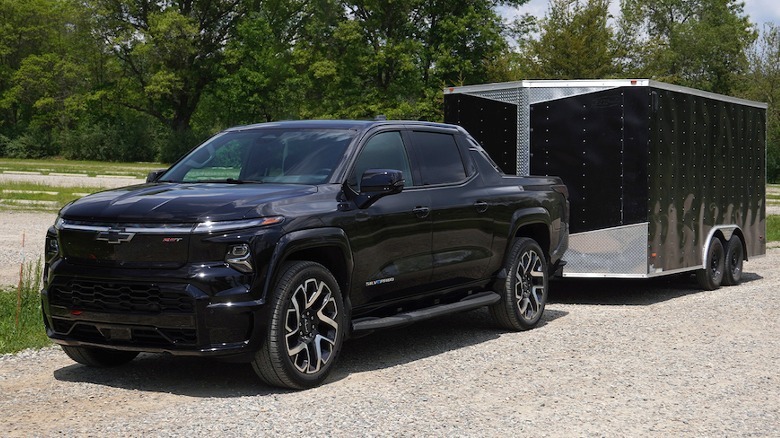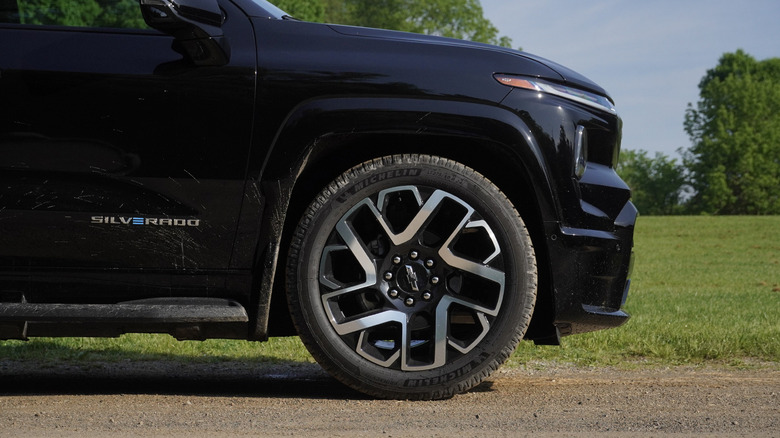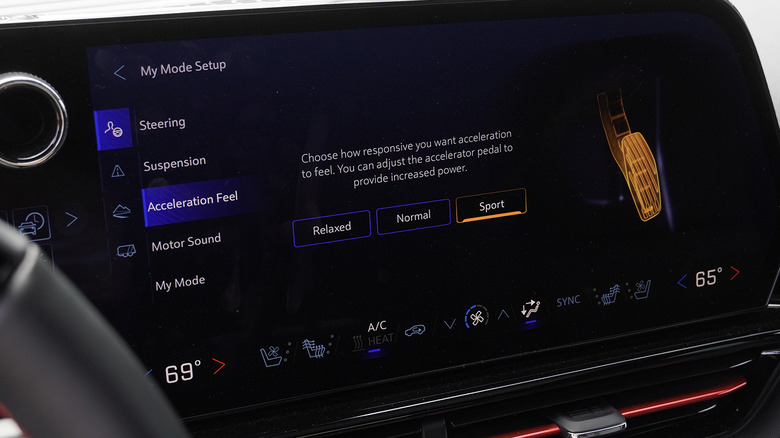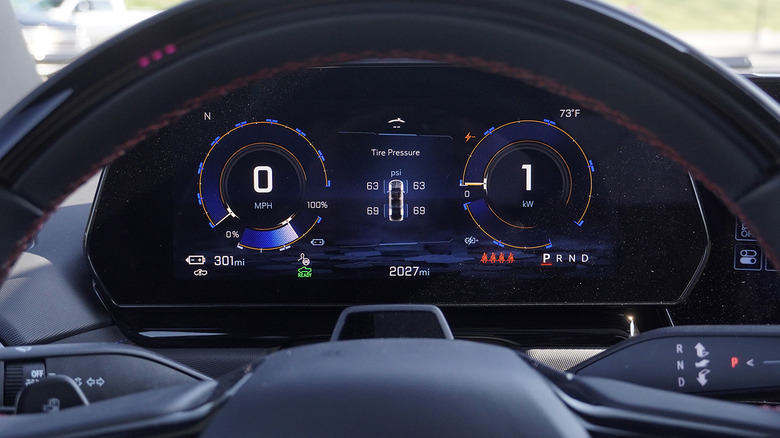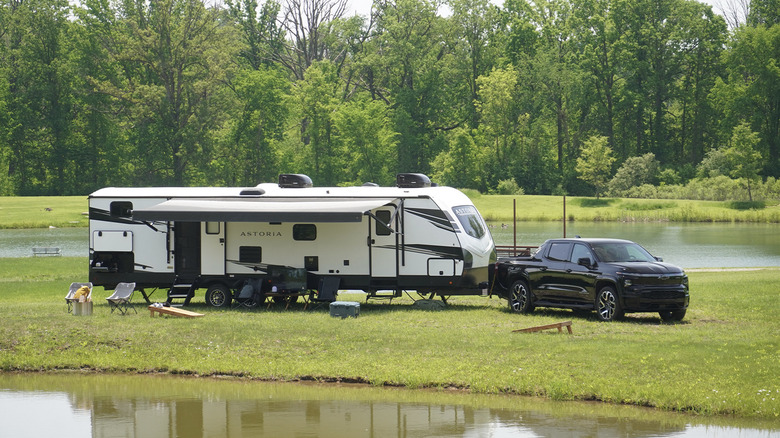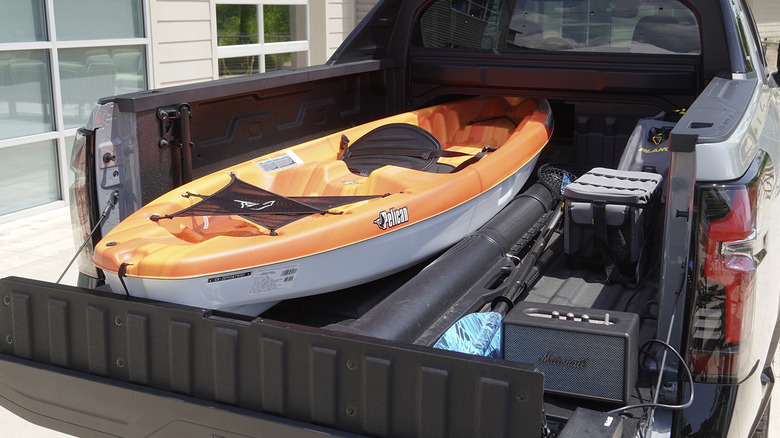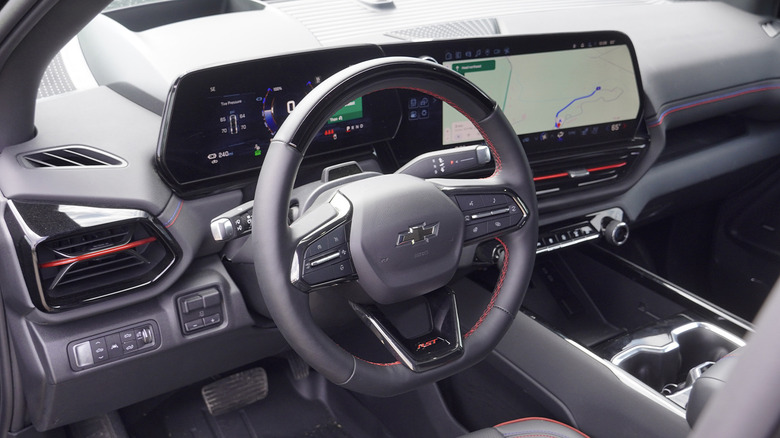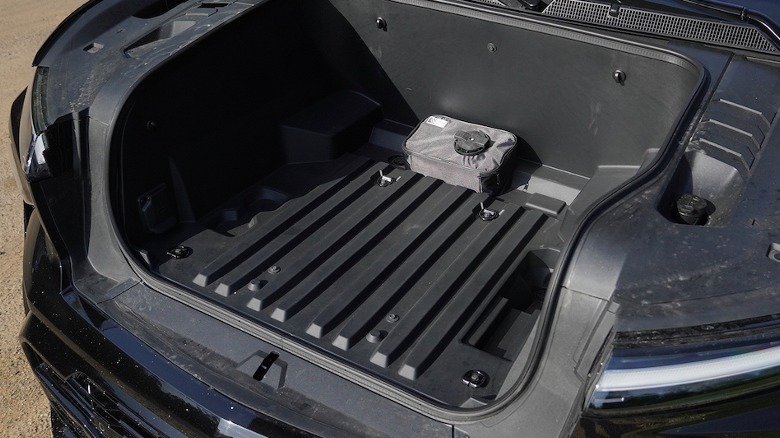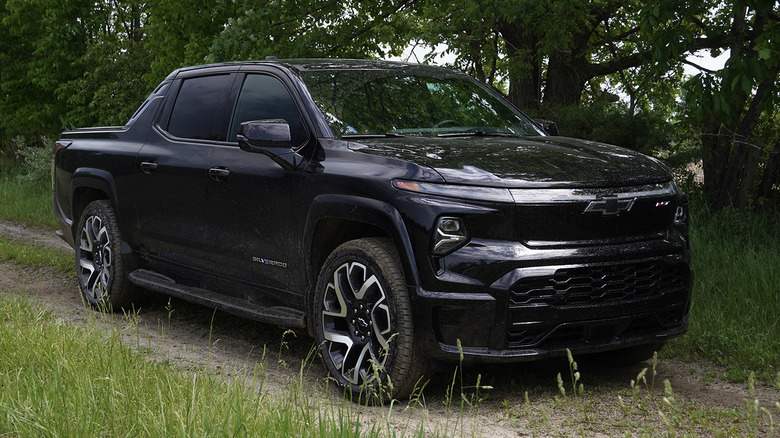2024 Chevrolet Silverado EV First Drive: Range, Power And Style Come At A Steep Cost
America's second-biggest name in pickup trucks goes fully electric this year, as the Chevrolet Silverado finally receives an EV variant available to the public almost exactly 24 months after Ford's F-150 Lightning debuted. Chevy followed a similar recipe as Ford, developing a skateboard battery pack with independent suspension at all four corners and dropping a crew-cab on top. But, where the Lightning impressed with commuter-car driving dynamics, complemented by somewhat disappointing battery capacity, the big news for Silverado comes down to an official EPA range estimate of up to 450 miles.
The 2024 Silverado EV shares a slimmed-down version of the Ultium platform that underpins the GMC Hummer EV, which translates to a 205-kilowatt-hour battery pack in this case. Now, in addition to the first trim package available–the fleet-only WT–a limited run of $94,500 RST First Editions achieves a range rating of 440 miles, with early customer orders already shipped to dealerships nationwide.
On a media trip around Detroit, I drove an RST First Edition for a full day of combined city, highway, and backcountry roads to test out Chevy's latest and, as GM certainly hopes, greatest electric pickup truck on the market today.
Huge wheels, strange tire choice
Even before leaving Detroit, though, the RST's record-setting 24-inch wheels—the largest ever fitted to a production vehicle—began making their presence known, in a theme that would continue all day. Chevrolet reps on hand readily admitted that the decision to spec such massive rims came down to styling alone, and required pumping the eco-friendly Michelin Primacy LTX tires all the way up to 61 and 68 PSI front and rear to reach the optimum rolling resistance that allows for such an impressive range goal.
But a large enough battery to unlock so much range also means the Silverado EV RST First Edition weighs in at 9,119 pounds as equipped, almost 600 pounds more than a WT, and over 2,000 pounds more than the F-150 Lightning, Rivian R1T, or Tesla Cybertruck. Blame the Ultium platform's beefy steel cell module engineering, but thin tire sidewalls simply struggle to cope with the sheer physics at play. Flexing rubber and an air suspension system that offers only two inches of ride height adjustment can only do so much, after all.
To help find the smoothest ride, I dropped into the touchscreen's MyMode and selected "Tour" for the suspension, then lowered the ride height to keep the airbags as soft as possible. The setup helped a bit, allowing me to focus on the fun factor of a big truck with so much brutal straightline acceleration on tap.
The Silverado WOWs in a smooth and straight line
In a truck with up to 754 horsepower and 785 lb-ft of torque in so-called WOW mode (WOW stands for "Wide Open Watts"), the wheel/tire combo and firmer suspension also help to allow for surprisingly steady handling in corners, too—even if the Michelins start protesting immediately, as expected. Still, when Chevy engineers lined up a faux drag strip for some hard launches off the line, the demonstration seemed much more fitting for the Silverado EV's true straightline spirit.
Lowered all the way, with every setting dialed into the sportiest option, I then snuck in and turned off traction control, knowing that commuter EVs never fully allow for full-on tire-spinning drift modes. Instead, because the electric motors would essentially spin up to their infinite max speed instantaneously, the programming when the "T/C Off" warning pops up merely seems to maximize putting power to the ground.
When I stepped off the brake pedal and stomped on the RST, the nose lifted and the tail squatted, tires chirping for a second while finding grip as we hustled the makeshift drag strip. The initial acceleration probably flagged for a moment or two before all four wheels hooked up—traction control still active, without a doubt—then the full dual-motor WOW power unleashed with a hint of torque steer thrown in for good measure. Soon enough, I lifted off and hammered all my left leg's strength onto the brake pedal again for a full ABS stop. Windows down, the punge of searing tires filled the crew cab.
Range, more range, and even more range
After one more launch, with tires definitely warmer the second time around, I can confirm the Silverado lacks some of the gobsmacking jerk of a Lightning, R1T, or Cybertruck. But that's what a ton, literally, of additional poundage produces. The Ultium platform nails the range requirement, though, and in reality, nobody needs a pickup truck that can keep up with supercars.
Buyers want range, more range, and even more range, especially the holdouts and skeptics that Chevrolet hopes to coax into electric ownership with the Silverado EV. And over the course of the day's drive, the Silverado's real-world range appears more than legit. Through the Michigan heat, including two hard launches at the drag strip that used a full eight miles of range alone, and while in love with the air conditioning and ventilated seats blasting, I kept track of one truck over 107 miles. In total, that Silverado used 24% of battery and only 105 miles range—despite mostly driving between 50 and 80 miles an hour, where larger EVs tend to perform the absolute worst.
Extrapolating that math results in 445 miles of range at normal speeds, though of course more testing will bear out the numbers better. I also tried out a short towing demo, though, by hooking up a 5,800-pound trailer to another truck. Part of the trailering segment involved showing off Super Cruise, which worked just as well as normally in terms of safety and lane-keeping despite the trailer, with just a slight drop-off in smoothness.
Super Cruise towing in the Silverado EV
More importantly, though, I wanted to experience how an EV tows for the first time. In this case, the Silverado hauled up to highway speeds with unbelievable ease. I also suspect the truck's additional weight helped to tame any trailer feedback into the tow hitch, and over the course of 21 miles, the battery readout only dropped 22 miles of range while cruising through rolling hills at a somewhat steady 40 to 60 miles per hour.
Typically, discharge—and therefore charging—rates of battery packs limit an EV's performance more than the electric motors. In the case of the Silverado, GM apparently reduced motor output during regular driving enough to achieve the desired range figure, to which I attribute the noticeable difference between normal and WOW modes (all wheel and tire discussion aside).
The Silverado EV's 800-volt architecture nonetheless contributes charging capabilities up to 350 kilowatts, which generally renders the charging stations themselves as the roadblock rather than the EV itself. Chevy estimates a 10-80% charge time of 40 minutes, even under ideal circumstances, due to the size of the battery. Hopefully, Tesla Superchargers continue to play nice and transform that dream world into reality.
Details that set the Silverado EV apart
Other design and engineering decisions play out well in the Silverado EV, too. Chevy's programming for the Silverado's rear-wheel steering doesn't allow full-on crab-walking — unlike the GMC Hummer EV — but can reach 7.5 degrees. The system only makes tight turns easier, without producing any strange dynamics from latency or higher-speed confusion of a Cybertruck. Three levels of one-pedal driving will help to bridge the gap for buyers accustomed to ICE coasting or willing to experiment with light regen, all the way to full stops that don't require using the brake pedal.
The crew cab, meanwhile, seems spacious from the front or rear seats alike, the latter of which drop down in a 60-40 split "mid-gate" arrangement similar to the erstwhile Avalanche. Combining the mid-gate with the rear Multi-Flex tailgate's longest position creates up to 10'10" of longitudinal bed length, or 9 feet when using just the Multi-Flex arrangement, and 5'11" with everything closed. Those figures dwarf the electric competition, even if allowing the passenger compartment to open up to potential weather required the Silverado to skimp on some of the more premium materials that other company's prioritize—and in fact, internal-combustion Silverados do, too.
Serious considerations for daily drivability
Still, the 17.7-inch touchscreen shared with Traverse and Equinox pairs well with a 12.3-inch gauge cluster to make nav and other infotainment selections relatively straightforward. Unless, of course, you want Apple CarPlay or a real on-off button—Chevy nixed CarPlay on EVs, for reasons that make zero sense, and only a widget on the home page allows for the option to turn the truck off (or activating a sort of waiting mode that keeps tech functions running for 60 minutes).
A seven-gallon configurable center console gobbled up my camera more than a few times, so should fit purses, groceries, first aid kits, and safes just fine. And the large frunk contributes to lockable storage, with what looks like a drain plug at the bottom. But I can admit to a bit of disappointment that the truck bed's vertical sidewalls don't feature insulation, as on the Avalanche, though with up to 10.2 kilowatts of accessory power supported via up to 11 outlets, the Silverado EV can power a full-on fridge anyway.
Whether to wait for future models
GM's various home charging and vehicle-to-home solutions also fit into the mix for Silverado EV, which might well help to counteract some of the concerns about lugging around 205 kilowatt-hours of battery around for most buyers. A Trail Boss coming for model year 2025 will add knobby tires and some suspension revisions, but it's relatively absurd to do any real truck stuff with such a heavy vehicle on such thin tires, especially any off-roading. Not that such rationality will stop me when the time comes, but more so because, as on the Hummer EV, the Silverado leaves the factory without a spare tire despite such cavernous storage volume.
Other models including the Trail Boss should split the gap between the borderline Spartan WT fleet truck—still in the high-$70,000 range but at least riding on 18-inch wheels—and the $94,500 (plus $1,895 destination) RST First Edition. Lower pricing for those future trucks should also help to make the Silverado EV much more attractive, but the RST itself ends up in a somewhat counterproductive position.
Chevy built arguably the first electric pickup to hit the market with a legitimate combination of range and capability, then bolted on city-slicker 24-inch rims that overstress the suspension components enough to make any off-roading (or other truck stuff at all, really) a bit nerve-racking. Until the time when more details about future trims emerge, the RST effectively undoes much of the positive aspects about the Silverado EV, and only appears to border on the Hummer's market positioning, albeit finished for now in only one shade of black.

